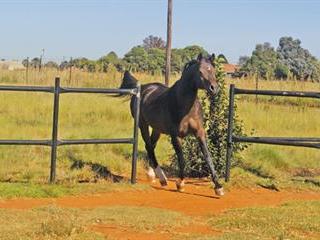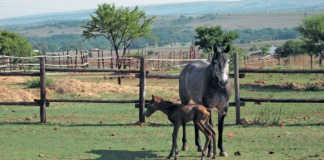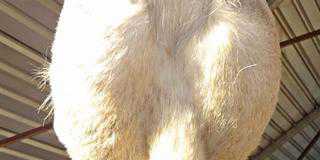
Last time, we spoke about buying a horse. Now that its home, you need to know what to feed your new equine friend. Remember, a horse is as healthy as its diet. Horses are naturally grass eaters. But domestic riding horses need more energy for the work they do. They may have to perform at speed over obstacles, or travel long distances with a weight on their backs. Simply put, these are ‘unnatural’ activities for which plain old grass is no longer enough.
A ration of protein-enriched feed is essential. The horse is a ‘trickle feeder’. The breaking down of sustenance starts with the chewing process. Food then passes into the stomach, which is relatively small and can only cope with about 2,5kg of food at a time.
Food moves from the stomach to the small intestine and then into the large intestine. A comprehensive dental and worming routine will maintain the horse’s condition and help it digest its food and get the most value from it. Teeth should be attended to at least once a year.
Rules
There are a few rules to feeding; stick to them and not much will go wrong:
- When working out the horse’s feed ration, take into account its age, body weight, temperament and work load. A more active or nervous horse will burn more energy and need more food. A sluggish horse needs less. Feed according to work done that day and cut feed on days off.
- Divide the ration into small, frequent feeds. A horse will happily munch through a drum of feed and promptly develop colic. It’s a good idea to provide no more than 2,5kg of feed at one time.
- Horses are creatures of habit and like to be fed at the same time each day.
- Clean, fresh water must always be available, as it aids in the absorption of nutrients.
- Any change in feed should be initiated very gradually over several days to prevent a major upset in the gut.
- Always allow your horse’s feed to digest before you ride. Otherwise, you’ll put unnecessary stress on the lungs (the stomach lies near the diaphragm) and the rest of the system (blood is needed for muscle usage and digestion). One hour between feeding and tacking up is normally safe.
- Know the weight of your feed scoop! Don’t guess – you could be drastically over- or underfeeding. Keep an equivalent weight list with the different feeds in the feed room.
- Always throw away feed that your horse leaves behind. Never re-use it.
- Let your horse eat in peace and quiet and try to regularly add something ‘yummy’ such as carrots, apples, turnips or bananas to the feed. Find out its likes and dislikes.
It is safer to feed a ready-made, balanced horse feed.
Amounts
How much to feed is the next question. Bearing in mind that a horse needs to eat 1,5% to 2,5% of its total body weight, here’s a simple guide:
Step 1: If you don’t have access to a weighbridge or weigh-tape, measure your horse’s girth and the length from the point of the shoulder to the point of the buttocks in centimetres. Square the girth measurement, multiply by the length and divide by 8 717. This will give you a rough weight in kilograms.
On average, a 12,2hh (hands high) pony weighs about 300kg; a 14,2hh horse weighs about 425kg; a 15,2hh thoroughbred weighs about 500kg; and a 16,2hh hunter about 600kg.
Step 2: Decide how hard your horse is going to work and assess its condition. A horse is in good condition when its ribs are covered, but can still be felt, the rump is rounded and there’s no artificial crest caused by fatty deposits. Too much weight in a young horse can cause permanent problems later.If the horse is overweight, it will need less than 2% of its body weight in food. If underweight, it will need more than 2%.
Workload is divided into three categories. Maintenance to light work (hacking and doing a little slow cantering) requires one-third concentrate and two-thirds fibre. With a 600kg horse (2% = 12kg), that’s 4kg concentrate and 8kg fibre (hay) daily. Medium work (hacking, schooling and competing in dressage and show jumping) requires 50% concentrate and 50% fibre. Heavy work (regular competition in horse trails, cross-country, endurance or driving) requires two-thirds concentrates and one-third fibre.
Build up the horse’s feed as its work increases. If hay isn’t available, you’ll need an alternative source of fibre, such as clean oat straw or lucerne, which has veld grass in it. If in doubt, contact your vet.
Contact Kim Dyson at [email protected]. Please state ‘Horse therapy’ in the subject line of your email.













